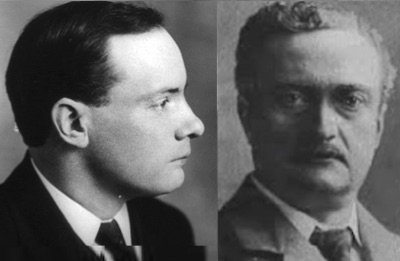
By An Sionnach Fionn
Liam Kennedy is a professor of economic and social history at Queen’s University Belfast, which is somewhat shocking given that he seems to have, at best, a passing familiarity with the latter half of his chosen speciality. Here he is in the Irish Independent, salami-slicing Irish history to suit his particular tastes. A little bit of this, a little bit of that, and you end up with a dog’s dinner of a historical analysis:
“A small, unrepresentative bunch of fanatical nationalists, none of whom had been elected, presumed to speak on behalf of the Irish people and plunge them, without so much as a by-your-leave, into the most terrible of all states, that of war and its associated terrors.”
Nope, he’s not referring to John Redmond, the head of the Irish Parliamentary Party and the self-proclaimed “leader of nationalist Ireland” in 1916, who cajoled, heckled and bullied tens of thousands of Irish men into the service of the fanatically nationalistic British Empire, knowing that many of them would be doomed to lie torn and dismembered beneath the battlefields of Europe, Asia and Africa.
“It was the plain people of inner-city Dublin who died in their hundreds to satisfy the blood-drenched fantasies of less-than-impressive poets and marginal figures on the Irish political scene.”
Those “marginal figures” of Irish politics were responsible for the deaths of less than 500 “plain people” in 1916. In contrast, the mainstream figures of Irish politics were responsible for the deaths of at least 15,000 “plain people” in 1916. The supposed nationalist, Redmond, and his ideological rival, the unionist demagogue Edward Carson, contrived between them to bring about the deaths - the industrial-scale murder - of some 35,000 khaki-clad men and boys from Ireland. Both did so while proclaiming their loyalty to a “blood-drenched” imperium ruled from London, Redmond condemning those who declined to fight as, “...running away in the hour of their Empire’s need.”
“Easter 1916 was a pivotal moment in Irish history. It copper-fastened Partition and deformed Irish politics. How could fellow Irish people of a unionist persuasion, who made up a quarter of the population, even think of an all-Ireland state after an insurrection that proudly proclaimed its alliance with the armies of the German Kaiser?”
The partition of Ireland was copper-fastened when the British separatist minority in the country, the unionists in the north-east under the malign tutelage of Carson, took up arms in 1912 against UK legislation to enact limited “home rule”. When they adopted terrorism and the threat of terrorism in pursuit of their rebellion, Ireland’s deformation was complete. And who armed the would-be insurrectionists? The German Kaiser. And who declared that the rule of “...Germany and the German Emperor would be preferred to the rule of John Redmond, Patrick Ford and the Molly Maguires”? None other than Edward Carson, leader and founder of the Ulster Unionist Party and the Ulster Volunteer Force.
Kennedy’s counter-factual fantasies are echoed in those of conservative politician-turned-presenter, Ivan Yates, also writing for the British apologist rag that is the Irish Independent:
“Constitutional nationalism is discommoded by self-appointed violent Republicans, who sought no electoral mandate from voters. Redmondites and pacifist traditions still maintain we’d have won freedom from British imperialism without taking up arms.”
From at least 1902 the Irish Parliamentary Party (IPP), the “Redmondites”, had an acknowledged army of street and parish thugs, which it used to beat its opponents into the ground. This was the Ancient Order of Hibernians, or AOH, an extremist force grown so ferocious that the two general elections held in 1910 were widely regarded as the bloodiest in living memory. AOH men openly displayed firearms at hustings and rallies, appeared with cudgels and batons during parades and demonstrations, raided or broke up rival meetings, including those of the All-for-Ireland League and the politically incipient Sinn Fein. By 1914 John Redmond had added an actual army, the Irish National Volunteers (INV), to his “baton men”. The IPP now had a military wing, the INV, with Redmond as the supreme leader of both, while his cohorts worked as gun-smugglers to arm the new Redmondite legion.
So who is more reprehensible on the scales of historical judgement? Patrick Pearse, a progressive militant who sought a modern democratic republic, a sovereign and independent Ireland where all of the children of the nation would be cherished equally, or John Redmond, a conservative militant who was ready to accept a devolved, partitioned Ireland within the United Kingdom, a province committed to the onward march of the UK’s imperial hegemony over the peoples of the Earth?
![[Irish Republican News]](https://republican-news.org/graphics/title_gifs/rn.gif)
![[Irish Republican News]](https://republican-news.org/graphics/title_gifs/harp.gif)

